AustLit
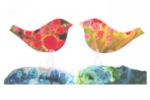
-
Junko Morimoto was born in Hiroshima in 1932. In 1945, as a thirteen year old, Morimoto survived the atomic bombing of Hiroshima. She graduated from Kyoto City University of Fine Art in 1955 and holds a Bachelor of Art degree and a Teaching Diploma. Morimoto migrated to Australia in 1982 where she published her first picture book, The White Crane (1983).
No picture book is the sole work of one person and Morimoto worked closely with editor Anne Bowers Ingram on many of her picture books. Bower's niece, Helen Smith, is responsible for the adaptation and translation of a number of her works and her son, Isao Morimoto, worked with Anne Bower Ingram on the translation of My Hiroshima from Japanese to English and solo on Big Nuisance and The Two Bullies.
Many of Morimoto's picture books have gained recognition by winning various awards, most notably CBCA Awards. (Follow the links to the AustLit work Records for each of the picture books on this trail).The majority of Morimoto's picture books are based on traditional folktales or adapted from stories by Kenji Miyazawa; only Big Nuisance appears to be an original story. My Hiroshima, however, is her nonfictional account of the day the atomic bomb was dropped on her home town.
Morimoto is, first and foremost, an illustrator. Her illustrative texts show clever use of dark and light alongside subtle colour palettes. These, combined with changing perspectives and thoughtful design, create beautiful picture books which are evocative of the traditional Japanese tales from which they came but also have appeal for a contemporary audience.
-
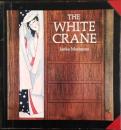 This image has been sourced from online.An old childless Japanese couple unexpectedly acquire a daughter after they rescue a lovely white crane trapped in a forest during a storm. (...more)See full AustLit entry
This image has been sourced from online.An old childless Japanese couple unexpectedly acquire a daughter after they rescue a lovely white crane trapped in a forest during a storm. (...more)See full AustLit entryThis traditional story explores notions of filial duty and 'forbidden fruit'. It has a storyline common to many such tales whereby a poor couple are rewarded for their kindness; but that reward comes with conditions which, when broken, lead to loss. It has parallels with the Biblical story of Adam and Eve and seems to endorse the old saying or adage: 'curiosity killed the cat'.
-
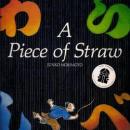 This image has been sourced from online.Yohei was a kind but poor man who went every day to pray at the shrine. On the hundredth day the wind blew and told Yohei to take heed of that which first came to mind. As he left the shrine Yohei fell down. As he was getting up he noticed that he was holding a piece of straw. He tied a horsefly to the end and continued on his way. He swapped the straw for two mandarines then swapped those for two rolls of silk and so on until he eventually swapped a horse for a house and land belonging to a Samurai who had been summoned urgently to the Emperor. (...more)See full AustLit entry
This image has been sourced from online.Yohei was a kind but poor man who went every day to pray at the shrine. On the hundredth day the wind blew and told Yohei to take heed of that which first came to mind. As he left the shrine Yohei fell down. As he was getting up he noticed that he was holding a piece of straw. He tied a horsefly to the end and continued on his way. He swapped the straw for two mandarines then swapped those for two rolls of silk and so on until he eventually swapped a horse for a house and land belonging to a Samurai who had been summoned urgently to the Emperor. (...more)See full AustLit entryThis story rewards imaginative thinking and kindness. It has some of the characterisitics of a cumulative or chain story in which one event leads to the next, but it does not sustain the repetition common to the genre.
-
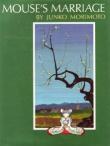 This image has been sourced from online.An elderly mouse couple wanted their only child to have "the best and mightiest" husband in the world. After considering and rejecting the sun, cloud, and wind they found the ideal groom closer to home than they had expected. (Source: Book) (...more)See full AustLit entry
This image has been sourced from online.An elderly mouse couple wanted their only child to have "the best and mightiest" husband in the world. After considering and rejecting the sun, cloud, and wind they found the ideal groom closer to home than they had expected. (Source: Book) (...more)See full AustLit entryMouse's Marriage is another simple chain story. It is only through the illustrative text that its Japanese origins are revealed.
-
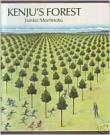 This image has been sourced from online.Although everyone in the village laughed at Kenju it did not spoil his happiness. One day Kenju decided to plant lots of trees in an empty field behind his family's house. Many people of the village teased Kenju about his trees but the children of the village loved to play in the forest. As time passes it serves as a fitting memorial to Kenju.(Source: from the Book)See full AustLit entry
This image has been sourced from online.Although everyone in the village laughed at Kenju it did not spoil his happiness. One day Kenju decided to plant lots of trees in an empty field behind his family's house. Many people of the village teased Kenju about his trees but the children of the village loved to play in the forest. As time passes it serves as a fitting memorial to Kenju.(Source: from the Book)See full AustLit entry
(...more)The environmental message in this book, along with an examination of the idea of rejection because of difference, makes it a compelling story. Kenju is considered 'slow' by the townspeople but he plants a forest which becomes a haven of green on the outskirts of a rapidly growing town. The forest also serves as an appropriate memorial to Kenju.
-
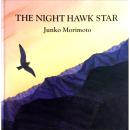 This image has been sourced from online.'All the other birds make fun of Night Hawk because he is different from them. This is the story of his hope, his strength and determination.' (Source: Back cover)See full AustLit entry
This image has been sourced from online.'All the other birds make fun of Night Hawk because he is different from them. This is the story of his hope, his strength and determination.' (Source: Back cover)See full AustLit entry
(...more)The main theme of this book centres on rejection because of difference. All the other birds make fun of Night Hawk because he is different from them. This is the story of his hope, his strength and his determination.
-
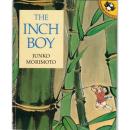 This image has been sourced from online.Issunboshi's smallness (he was only an inch tall) did not discourage him from his ambition to become a famous samurai and to serve a noble Lord in Kyoto.See full AustLit entry
This image has been sourced from online.Issunboshi's smallness (he was only an inch tall) did not discourage him from his ambition to become a famous samurai and to serve a noble Lord in Kyoto.See full AustLit entry
(...more)Morimoto's story is an adaptation of a Japanese folktale about a childless couple who eventually have a very small boy whom they name Issun-boshi, or One-Inch Boy. Issun-boshi sets off on his adventures imagining himself a tiny samurai.Read this story in association with other works of fiction on the small stature of the protagonist such as Hans Christian Andersen's Thumberlina (see below) and Tom Thumb. A useful approach is to look at issues of agency and gender.
For more fiction on the Samurai tradition see White Crane by Sandy Fussell from the Samurai Kids series listed on this Learning Trail. However, it is not to be confused with The White Crane, another Junko Morimoto picture book.
-
A Japanese Tom Thumb
This is a silent animation on the adventures of Issun-boshi made in 1935 by director, Mitsuyo Seo
-
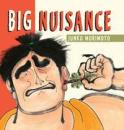 This image has been sourced from online.'Life in a small village is very slow and nothing's changed for a long, long time ... until the meddlesome giant Big Nuisance comes to stay and starts a whole lot of trouble.' (Source: Back cover)See full AustLit entry
This image has been sourced from online.'Life in a small village is very slow and nothing's changed for a long, long time ... until the meddlesome giant Big Nuisance comes to stay and starts a whole lot of trouble.' (Source: Back cover)See full AustLit entry
(...more)Unlike the other tales by Junko Morimoto, which are adaptations of earlier stories, this book appears to be her own story. The humour of the tale extends largely from the way in which the people of the village are able to get the better of the giant but there is also an appeal to the baser side when the giant suffers from flatulence.
The Source (http://www.magpies.net.au.ezp01.library.qut.edu.au/magpies/nologin/?MIval=m_member) describes it thus: "A beautiful book where design, colour, placement and line combine to produce a picture book which is close to perfection ... There is variety of perspective, wit and beauty on every page."
-
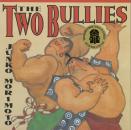 Image courtesy of publisher's website.'Ni-ou is the strongest fellow in Japan. No one can beat him. But that's not enough. When he hears that there is a strong man called Dokkoi in China, Ni-ou wants to beat him too. So he goes looking for a fight.' (Source: Back cover)See full AustLit entry
Image courtesy of publisher's website.'Ni-ou is the strongest fellow in Japan. No one can beat him. But that's not enough. When he hears that there is a strong man called Dokkoi in China, Ni-ou wants to beat him too. So he goes looking for a fight.' (Source: Back cover)See full AustLit entry
(...more)This is another humorous story brought to us by Morimoto. The ending allows the protagonists to retain their dignity without ever being put to the test; both have respect for each other based on misinformation. Compare this portrayal of the warrior tradition with that of The Inch Boy?
-
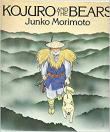 This image has been sourced from online.This story describes the hardships and sorrows of a bear hunter. Kojuro comes to regret that he must kill the bears in order to make a living. Eventually, the wheel turns and his life is ended by a bear. (Source:From the book) (...more)See full AustLit entry
This image has been sourced from online.This story describes the hardships and sorrows of a bear hunter. Kojuro comes to regret that he must kill the bears in order to make a living. Eventually, the wheel turns and his life is ended by a bear. (Source:From the book) (...more)See full AustLit entryThis story is an adaptation of an earlier story by esteemed Japanese writer, Kenji Miyazawa. His story, The Bears of Mt Nametoko, is told from the point of view of the bears but Morimoto's more recent version is told from the hunter's point of view. What effect does this have on the narrative? (For further information on this see the article by Helen Kilpatrick below).
-
Critical Essay: A Cross-Cultural Comparison of 'Kojuro and the Bears' with 'The Bears of Mt Nametoko' / Helen Kilpatrick
See full AustLit entryKilpatrick explores the notion that 'different cultural and narratological differences can affect the significances arising out of the texts' (16), through an examination of Miyazawa Kenji's Nametoko Yama no Kuma, the Morimoto/Smith adaptation Kojuro and the Bears (Australian CBC Picture Book of the Year 1987), and the unillustrated original narrative. In a cross-cultural comparison, Kilpatrick argues that the westernised adaptations 'signify an unfamiliar message of interaction between nature and life to an audience acculturated by more anthropocentric traditions' (16).
(...more)Buddhism is intrinsic to Miyazawa's narratives and Kilpatrick sees a disparity between the principle Buddhist tenet regarding the 'equality and ultimate oneness of all beings and objects in the phenomenal world' and the anthropocentric western perspective which privileges humans over animals and nature, in a hierarchy which is fixed and naturalized (17) ... Kilpatrick highlights how the western adaptations are encoded with a more humanistic, ecological ideology which she argues, shows how fundamentally, 'different notions about death and the cosmos make it difficult to avoid acculturated beliefs'.
-
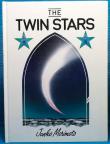 This image has been sourced from online.The Twin Stars is a light-hearted book about Twin Blue Stars in the Milky Way who take their job of shining their lights across the night sky very seriously. Until, that is, a large comet convinces them to come travelling with it. When they come to the end of the Milky Way the comet flicks his tail and Chunse and Pouse tumble towards earth and eventually land in the sea. On the sea floor they encounter star fish, a whale and a sea snake. They are very sad to think they are unable to return to their posts in the Milky Way. (...more)See full AustLit entry
This image has been sourced from online.The Twin Stars is a light-hearted book about Twin Blue Stars in the Milky Way who take their job of shining their lights across the night sky very seriously. Until, that is, a large comet convinces them to come travelling with it. When they come to the end of the Milky Way the comet flicks his tail and Chunse and Pouse tumble towards earth and eventually land in the sea. On the sea floor they encounter star fish, a whale and a sea snake. They are very sad to think they are unable to return to their posts in the Milky Way. (...more)See full AustLit entryThe moral of this story appears to be that one should not step outside of one's place in life but work diligently and loyally at one's assigned role. Of course, although the twin stars, Chunse and Pouse, were tricked by the comet they did have an exciting adventure.
-
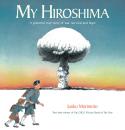 This image has been sourced from online.In this picture book, the author relates her own experiences as a high-school student when her city was destroyed by the first atomic bomb.See full AustLit entry
This image has been sourced from online.In this picture book, the author relates her own experiences as a high-school student when her city was destroyed by the first atomic bomb.See full AustLit entry
(...more)No collection of the picture books of Junko Moriomoto would be complete without My Hiroshima. However, it is very different from her other works as it is based on the author's experiences as a thirteen-year old on the day the atomic bomb was dropped on Hiroshima. Moriomoto was at home sick that day and, consequently, was saved from the fate that met most of her school friends. Compare Morimoto's recollections with other survivor stories.
-
 Courtesy of Walker Books.'Niya Moto is the only one-legged Samurai kid in Japan, famous for falling flat on his face in the dirt. None of the samurai schools will teach crippled Niya, until an offer arrives from the legendary samurai warrior Ki-Yaga, sensei of the Cockroach Ryu. Together with the other Cockroaches, Niya must defeat the fierce Dragons Ryu at the Samurai Trainee Games.' (From the publisher's website.) (...more)See full AustLit entry
Courtesy of Walker Books.'Niya Moto is the only one-legged Samurai kid in Japan, famous for falling flat on his face in the dirt. None of the samurai schools will teach crippled Niya, until an offer arrives from the legendary samurai warrior Ki-Yaga, sensei of the Cockroach Ryu. Together with the other Cockroaches, Niya must defeat the fierce Dragons Ryu at the Samurai Trainee Games.' (From the publisher's website.) (...more)See full AustLit entry'It isn’t easy training to be a Samurai, but for Niya the task is extra difficult – because he has only one leg. In spite of his disability, Niya dreams of being a great samurai and, in the meantime, of defeating all of the other competitors at the Annual Samurai Trainee Games. First, though, he must get through a gruelling training schedule and a difficult journey to attend the games.' (Source:Aussiereviews.com)
Although this book has a similar title to Junko Morimoto's picture book The White Crane it shares more similarities with other Morimoto picture books such asThe Inch Boy and The Night Hawk Star.
-
This folktale was written by the famous Danish writer, Hans Christian Andersen, in 1835. It tells of the trials and tribulations in the life of a tiny girl called Thumbelina. The difference between this story and those of The Inch Boy and Tom Thumb is that Thumbelina's part in her own narrative is a very passive one whereby she makes very few attempts to escape from any of the unsuitable suitors with whom she becomes involved.
You might be interested in...



